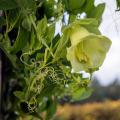Wallflower seeds
Does this plant fit my garden? Set up your Plantfit profile →
Available in 1 sizes
Available in 1 sizes
Available in 1 sizes
Available in 1 sizes
Available in 1 sizes
Available in 1 sizes
Available in 1 sizes
Available in 1 sizes
Available in 1 sizes
Available in 1 sizes
Available in 1 sizes
Available in 1 sizes
Available in 1 sizes
Available in 1 sizes
Available in 1 sizes
Available in 1 sizes
Available in 1 sizes
Available in 1 sizes
Available in 1 sizes
Available in 1 sizes
Available in 1 sizes
The seeds of Wallflowers, 'flowers of walls', can be sown directly in place in May or June. Prepare the ground carefully so that the soil is as fine as possible, do not pack the seeds tightly and cover with about 5mm (0in) of sifted sowing compost. Press down and water lightly. Maintain moisture during germination and cover with a light veil to protect the seedlings from direct sunlight. Wallflowers are popular for their fragrance, their colours, but above all for their adaptability in difficult environments. Wallflowers, also known as Erysimum, are perennial varieties cultivated as biennials. Easy to grow and maintain, they appreciate deep, ordinary but well-drained soils. In sunny locations, they bloom from May to November. Tip: To ensure abundant flowering every year, it is necessary to prune the faded clusters, but Wallflowers only live for 3 years. By leaving a cluster with seeds here and there, it will self-sow and replace the older plants.
Haven't found what you were looking for?
























































































































































